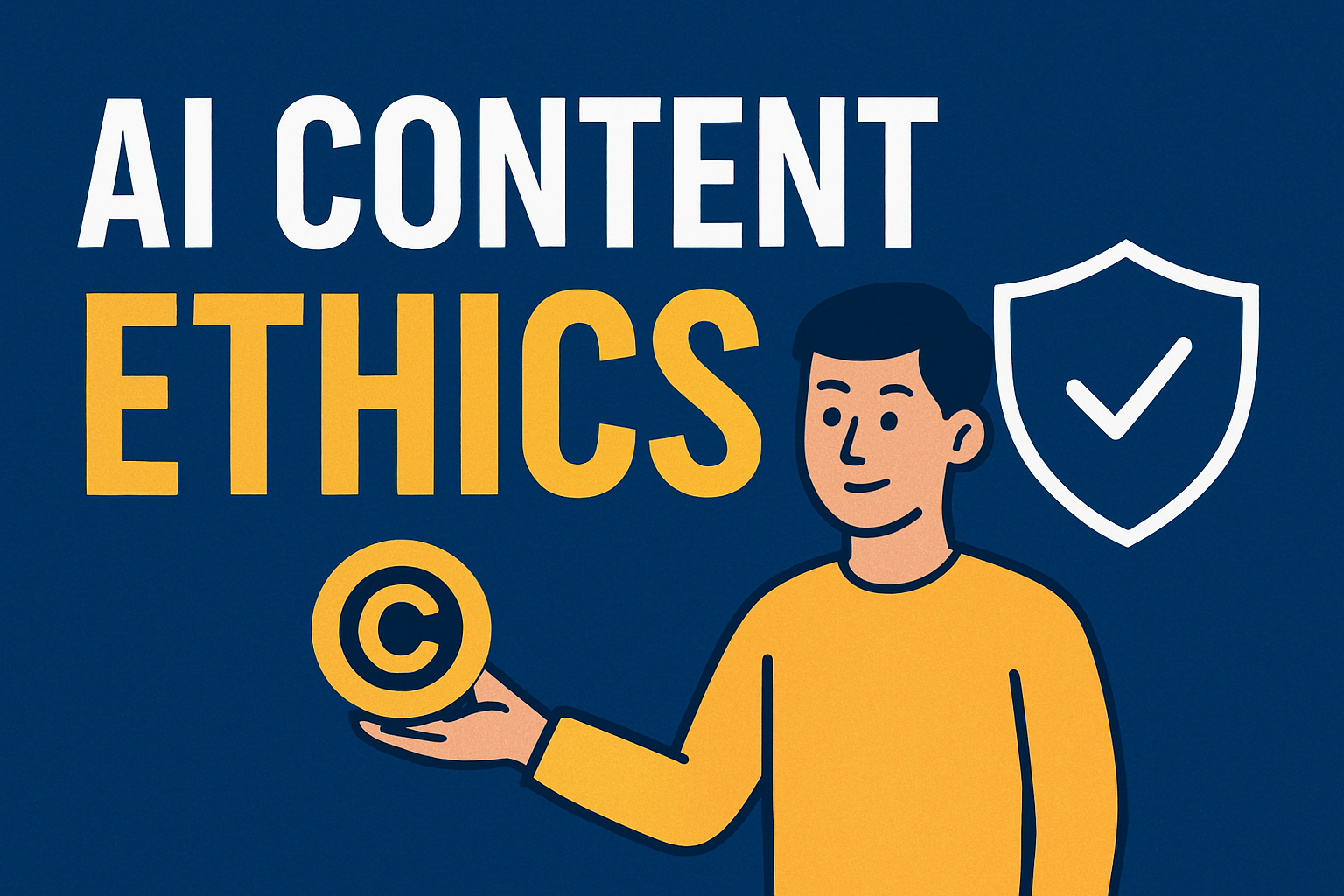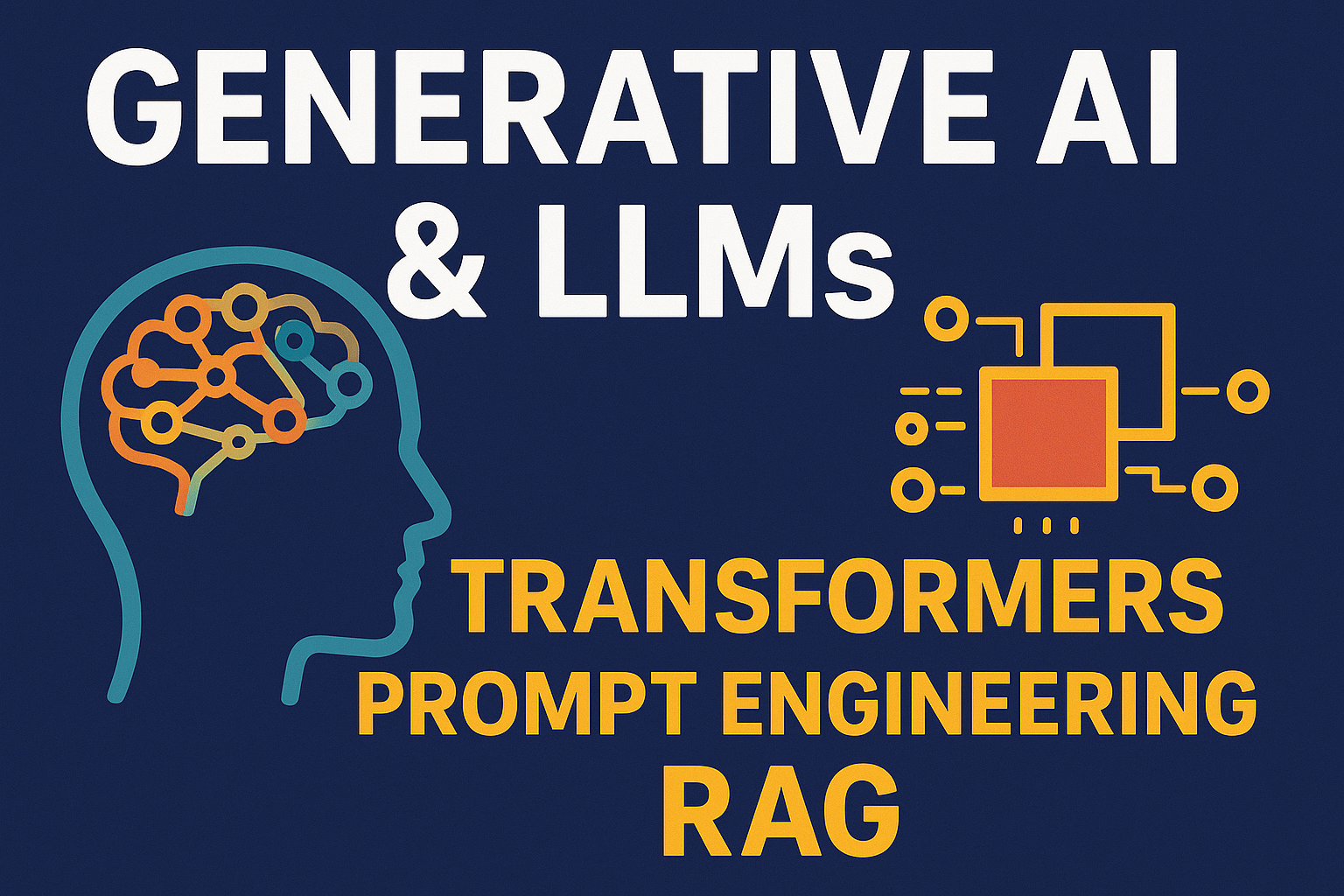
AI is changing how we create content, but it’s raising big questions about ethics. Tools like generative AI offer speed and efficiency, yet they bring concerns about fairness, privacy, and trust.
This blog will guide you through key issues like copyright challenges, originality in AI content, and building audience trust. Keep reading to learn how creators can use AI responsibly in 2025!
Key Takeaways
- AI in 2025 raises key ethical issues like copyright, fairness, originality, and trust. Clear rules are needed to address ownership and prevent misuse.
- Algorithmic bias can harm representation and deepen divides. Tools like Pippit promote inclusivity with diverse avatars and voices.
- Transparency is vital for building trust. Labels such as “AI-assisted” help audiences understand content origins.
- Generative AI risks copyright infringement by unintentionally mimicking original works. Plagiarism detection tools can reduce this risk.
- Human oversight ensures quality, authenticity, and compliance with ethical standards in AI-generated content creation workflows.
Key Ethical Concerns in AI Content Creation
 AI content creation brings big questions about fairness and honesty. People want to know if the tools they use are fair, safe, and truthful.
AI content creation brings big questions about fairness and honesty. People want to know if the tools they use are fair, safe, and truthful.
Algorithmic Bias and Fairness
Algorithmic bias can creep in when AI systems rely on flawed or incomplete training data. Historical biases tied to gender, race, or ethnicity often reflect in the outcomes, scaling stereotypes and causing harm.
For example, biased language in AI-generated content could alienate customers or damage a brand’s reputation. Large language models like GPT-4 amplify small biases into larger discriminatory patterns, impacting fairness in significant ways.
Solutions already exist to minimize these issues. Tools like Pippit introduce over 600 diverse avatars and support 28 languages with 869 distinct voices. This promotes inclusivity across global audiences.
Custom avatar features even allow users greater control over representation, reducing default cultural assumptions baked into automated outputs. Without addressing such systemic problems early on, AI risks deepening social divides through its “digital amplification” of existing inequalities.
Transparency and Explainability
AI systems often operate like black boxes, hiding how they process information. This lack of clarity makes it hard to spot biases or errors in AI-generated content. For example, users may not know why a large language model suggests certain phrases or data over others.
Pippit’s Smart Creation tool highlights this issue by offering video recommendations without clear explanations of its choices. Without transparency, trust becomes fragile, and accountability is harder to maintain.
Users need tools that explain decisions step-by-step. Detailed controls help creators understand AI actions while also editing outputs to align with their goals. Pippit addresses this partly by allowing control over videos’ length and aspect ratios during creation processes.
Transparent features like these empower content creators and reduce misunderstandings between humans and machines using artificial intelligence in content marketing strategies.
Data Privacy and Security
Protecting data is crucial, especially with personal or customer information. Unauthorized access can lead to serious risks, like data breaches or misuse without consent. Creating custom avatars using personal photos means trusting platforms with sensitive content.
This trust depends on strong security policies and clear user agreements.
TikTok Shop’s product tagging deals with private sales figures, requiring tools built for safe handling of such details. Pippit by CapCut focuses on protecting user uploads, urging users to review its privacy standards carefully.
Without these safeguards, the risk grows significantly for businesses and individuals alike.
Misinformation and Authenticity
AI can create deepfakes and fake news that mimic reality. False information spreads quickly through social media, making it harder to separate fact from fiction. For example, AI-designed avatars or text can impersonate real people in ways that are nearly impossible to detect.
This raises serious concerns about trust in digital content.
Marketers must avoid using generative AI for deception or misleading audiences. Misusing tools like large language models (LLMs) could harm public trust in artificial intelligence itself.
Using reliable plagiarism detectors and pre-cleared assets is one way to reduce risks of spreading false information while respecting intellectual property rights.
Authenticity matters more than ever; trust takes years to build but seconds to ruin.
Copyright Challenges in AI-Generated Content
Who owns AI-created work, and can it truly stay original? Stick around to explore these tricky questions.
Intellectual Property Ownership
Determining intellectual property rights for AI-generated content sparks major debates. As of 2025, courts and lawmakers wrestle with this issue. Traditional copyright laws protect human creators but don’t address works made solely by machines.
If an AI generates text, music, or art without direct human input, who owns it? The programmer? The company behind the system? Or does no one own it at all? OpenAI’s tools like ChatGPT push these boundaries further, creating confusion over ownership.
This legal gap creates risks for businesses using generative AI in digital marketing or content creation. Without clear rules, companies might face lawsuits over “plagiarized” elements within AI-crafted work.
Imagine a neural network unintentionally mimicking copyrighted material due to its training data; liability could become murky fast. Courts may need years to establish solid guidelines addressing both creators’ rights and corporate responsibilities under intellectual property law.
This brings us to plagiarism concerns and copyright breaches in AI-driven projects next!
Plagiarism and Copyright Infringement
AI-generated content often faces accusations of plagiarism and copyright infringement. Large language models (LLMs) process vast amounts of existing data, including creative works.
This raises questions about intellectual property rights. If AI reproduces phrases or ideas from that data, it risks copying original material without permission. For example, generating a paragraph too close to an author’s work can lead to legal battles.
Content creators must watch for these risks when using AI tools like ChatGPT 3.5 or similar systems in 2025. Even with pre-cleared assets offered by platforms such as Pippit, responsibility lies with the user to safeguard against violations.
Applying tools for plagiarism detection is key to avoiding these issues while respecting copyright laws and fair use limits.
Fair Use and Its Limitations
Fair use lets creators use copyrighted work in specific cases, like teaching or criticism. It’s tricky with AI tools, though. Artificial intelligence relies on large datasets pulled from various sources.
Some of these may include protected works without permission.
Blindly trusting generative AI can breach fair use rules. Over-reliance risks sharing content too close to the original material. Users should always review outputs and edit carefully to stay compliant with copyright laws.
Simple human oversight makes a big difference here, keeping content legal and ethical while protecting intellectual property rights.
Originality in AI Content Creation
AI can mimic patterns, but is it truly creating? Balancing machine output with human creativity sparks fresh debates.
Defining Originality in AI-Generated Work
Originality in AI-generated content sits in a gray area. AI pulls from large datasets, often millions of pieces of prior work. This means the output is shaped by existing patterns, styles, and knowledge embedded in those datasets.
Unlike human creativity driven by personal experiences or emotions, generative AI relies on machine learning algorithms to combine pre-existing data into something that feels new but isn’t fully independent creation.
Courts and lawmakers remain divided on how to classify such work as of 2025. Questions about intellectual property rights are growing louder. If an artist creates with brush strokes but AI uses text prompts crafted by someone else, who truly owns the final product? Generative artificial intelligence challenges traditional views on originality because its “creativity” largely mirrors its training dataset without inventing entirely fresh ideas like humans do naturally.
Balancing Automation with Human Creativity
AI tools like Pippit combine machine efficiency with human creativity. Automation accelerates tasks, while the human element brings depth and emotion. AI serves as an assistant rather than taking full control.
For instance, generative AI can quickly draft ideas, allowing humans to refine them with personal style.
Personalization enables creators to maintain authority over their work. AI streamlines processes, freeing time for creative thought. This method supports originality while ensuring content remains authentic and engaging for audiences.
Preserving the Human Voice in AI-Driven Content
Crafting AI-generated content with a human touch means keeping brand values front and center. Automated tools, like IMAGE STUDIO, support editing processes to maintain authenticity.
Relying on multi-track editing helps avoid generic outputs that feel lifeless or robotic. Each piece of content needs to sound personal and relatable, rather than like it came from a machine.
Human oversight plays a key role in this process. Brands must evaluate if the output aligns with their tone and ethics. For example, ensuring consistency between past work and new AI-assisted content strengthens trust with audiences.
Balancing automation with creativity protects the voice that sets brands apart in crowded markets while promoting ethical use of artificial intelligence tools in marketing efforts.
Building Trust in AI Content Creation
Trust is the backbone of AI-driven content. Clear communication and ethical practices make all the difference.
Ensuring Transparency with Audiences
Audiences deserve honesty about AI-generated content. Brands should clearly share how artificial intelligence is used in creating blogs, videos, or social media posts. Many people value transparency when interacting with content online.
Disclosure builds trust and aligns with modern audience expectations.
Clear language helps establish this openness. For example, brands can tag articles as “AI-assisted” or note it directly in captions on social platforms like Instagram or Facebook. These small steps prevent confusion and foster reliability.
Today’s reader wants to know who—or what—created the material they consume daily!
Promoting Inclusivity and Diversity
AI content must reflect everyone, not just a few groups. Pippit offers over 600 avatars and supports 28 languages and more than 869 voices. These tools allow users to create diverse AI avatars that represent different races, genders, and cultures intentionally.
Reviewing AI-generated text for inclusive language is crucial too. This step avoids harmful stereotypes or biased messages slipping into content. Including varied perspectives builds trust in audiences while showing respect for all communities involved.
Prioritizing Human Oversight and Control
Human oversight in AI content creation is a must. Machines can process data fast, but they miss the human touch. Users need to check each AI-generated output for fairness, originality, and accuracy.
This step stops biases or errors from slipping through. Reviewing edits keeps the trust between brands and their audiences intact.
Pippit’s analytics tools help support this effort by offering insights for better communication strategies. These features allow creators to refine outputs while respecting ethical guidelines like data privacy rules.
Combining AI speed with human approval creates balanced, responsible content every time.
Industry Solutions to Ethical Challenges
Companies are crafting smarter tools and strategies to tackle AI ethics head-on, setting the stage for fairer and safer content creation—stick around to see how it all clicks into place!
The Graded Scale Spectrum Method for Copyright Evaluation
The Graded Scale Spectrum Method offers a clear way to assess copyright issues in AI-generated work. It looks at four factors: Source and Quality of Training Data, Degree of Human Involvement, Commercial Impact, and Chance of Ethical Violation.
Each factor gets a score from 1 to 10. A higher score means the content is more ethically acceptable.
This system aims to bring fairness and accountability into copyright evaluations. For example, it helps separate fully human-made content from AI-assisted works when deciding ownership rights.
Legal experts suggest improving copyright laws based on this method by focusing on how much human input shaped the final piece. Cases like Thtre Dopra Spatial show why such tools matter so much as AI continues growing in creative fields.
Next comes exploring ethical tools for compliance with these challenges…
AI Tools Designed for Ethical Compliance
Understanding ethical compliance in AI tools is crucial for fair and responsible content creation. Some tools are already paving the way for better practices.
- AI Avatars: These allow creators to design virtual personalities while adhering to copyright rules. They include features that protect against unauthorized use of likenesses.
- Plagiarism Detection Software: Tools like these scan content to ensure originality and avoid copyright issues. They compare text against massive databases to flag potential problems.
- Smart Creation Features: Systems like Pippit’s help users maintain ethical standards by providing pre-cleared assets, reducing intellectual property risks.
- Image Studio Tools: These platforms edit visuals responsibly, adding options to verify rights or licenses for any uploaded images or templates.
- Deepfake Detection Systems: Such programs identify manipulated media, making it harder for fake content to spread online unchecked.
- Transparent AI Dashboards: These interfaces show how an AI model works and what data it uses, enhancing trust with audiences and regulators alike.
- Fairness Monitoring Apps: Algorithms in these apps check data inputs for bias, promoting inclusivity in generative AI outputs.
- Link-to-Video Functions: With this feature, ethical use of video elements becomes simpler by pointing directly to original resources or licenses needed.
Next comes understanding how broader implications affect industries using AI-generated work efficiently and responsibly.
Practical Steps for Businesses and Content Creators
AI tools built for ethical compliance can help businesses create fair and responsible content. Still, creators must take clear steps to meet high standards in AI-assisted content creation.
- Review rights for all data inputs before use. Always confirm proper permissions, especially for sensitive data or media like videos and images.
- Use AI tools with built-in plagiarism detection features. This helps avoid copyright issues or unintentional copying of existing work.
- Maintain transparency about AI-generated content with audiences. Clear disclaimers build trust in artificial intelligence (AI)-generated work.
- Prioritize inclusivity during the creative process. Select diverse datasets to prevent biases in AI outputs.
- Regularly audit algorithms used in large language models (LLMs). Frequent reviews uncover potential bias or fairness concerns early on.
- Safeguard user information and maintain data privacy at all times. This prevents breaches while staying compliant with regulations like GDPR.
- Balance automation with creativity by keeping humans involved in decisions. Final human oversight ensures unique voices remain present in published works.
- Define originality metrics specific to your team’s goals. Set clear benchmarks to track quality and authenticity of generative AI outputs.
- Educate employees on ethical guidelines for AI use in marketing and publishing efforts using industry-recommended training tools.
- Implement fair-use reviews before publishing any material created using style transfer or neural networks, avoiding legal risks related to intellectual property rights.
- Encourage feedback loops between researchers, policymakers, and content teams for continuous improvement on ethics-based workflows in 2025 content strategies.
Broader Implications of Ethical AI Use
AI is reshaping how people create, share, and trust content. Its impact stretches across industries, challenging norms and sparking new questions about fairness and authenticity.
Impact on Creative Industries
AI-generated content is reshaping creative industries. Tools like generative AI and large language models produce marketing content, social media posts, and digital art faster than ever.
Brands using AI gain speed but may risk losing originality or human touch in their work. Small errors can multiply quickly since AI amplifies its outputs at a massive scale.
This shift creates competition between automated systems and human creators. Graphic designers, writers, and marketers face challenges as businesses prioritize efficiency over personal input.
Yet ethical guidelines for AI offer hope. These rules encourage balance by preserving authenticity while leveraging automation to improve workflows.
Societal Trust in AI-Generated Work
Building societal trust in AI-generated content depends on transparency and fairness. People need to know how generative AI works, what data it uses, and who controls it. Clear communication helps users feel informed, while human oversight ensures decisions stay ethical.
Ethical use also guards against algorithmic bias or privacy issues. For example, developers must prioritize inclusivity and avoid harmful stereotypes in large language models. Fair practices create reliable tools for content marketing, research papers, or social media marketing without sacrificing user trust.
Ultimate AI Content Creation Workflow for 2025: From Idea to Publishing
AI simplifies content creation in 2025. Follow these steps for an efficient and ethical workflow:
- Begin with a clear idea or topic. Use AI tools like SMART CREATION (BETA) to suggest daily video concepts. Review the suggestions to align them with your values.
- Choose avatars or visuals using platforms like Pippit’s workflow. Customize these avatars to match your brand’s tone.
- Use an Image Studio to design product images or marketing graphics. Generate visuals that are both appealing and compliant with copyright laws.
- Create videos from URLs quickly using smart AI tools. AI turns links into polished, engaging video presentations in minutes.
- Tag products directly in the content using features like PRODUCT TAGGING. For example, integrate TikTok Shop links for easy purchasing access and improved transparency.
- Review for accuracy and bias before publishing anything generated by AI tools like large language models (LLMs). Human oversight is crucial here.
- Plan publishing schedules with advanced AUTO-PUBLISHING features offered by modern AI platforms. These features save time and improve audience reach.
- Use built-in analytics to measure performance after publication. Platforms today provide insights on engagement, reach, and ethical effectiveness.
- Update or tweak based on feedback from analytics data, keeping your audience in mind at every step of the process!
Conclusion: Shaping a Responsible Future for AI Content Creation
AI content creation is powerful, but ethics must lead the way. Protecting originality, trust, and data privacy will define its future. Clear rules on copyright and fairness are no longer optional; they’re essential.
Tools like Pippit show how innovation can also be responsible. By combining technology with human values, we can create smarter, fairer content for everyone.
FAQs
1. What are the ethical concerns of using AI in content creation?
AI-assisted content creation raises issues like data protection, intellectual property rights, and transparency in AI usage. It also involves addressing plagiarism detection and mitigating AI bias to ensure fair practices.
2. How does generative AI handle originality in its outputs?
Generative AI uses large language models (LLMs) and natural language processing (NLP) to create text based on existing data. While it can produce original-like results, there is a risk of unintentionally replicating existing work without proper safeguards.
3. Can businesses trust AI-generated content for marketing purposes?
Trust depends on how transparently the tools are used and whether ethical guidelines for AI are followed. Using clear policies around intellectual property, plagiarism detection, and unbiased outputs helps build confidence.
4. How do copyright laws apply to content created with artificial intelligence?
Copyright laws vary by region but often leave questions about ownership when using generative AI tools or machine learning systems. Businesses must clarify if their use aligns with intellectual property rules or creative commons licenses.
5. Is there a way to reduce bias in artificial intelligence systems used for creating content?
Yes, developers focus on improving algorithms through systematic reviews and scoping reviews that identify areas where biases exist. Ethical use of AI includes applying these findings to minimize conflicts of interest and ensure balanced outcomes.
6. Why is transparency important when using artificial intelligence in online marketing?
Transparency builds trust with users by showing how data privacy is handled during processes like SEM campaigns or brand marketing efforts. Open communication about methods reassures audiences while supporting informed consent practices across industries like academic publishing or medical diagnostics.



![AI Tools for Social Media Creators: Instagram, TikTok & LinkedIn [2025]](https://niftynautanki.com/wp-content/uploads/2025/09/AI-009-360x180.png)


![AI Writing Tools Compared: ChatGPT vs Jasper vs Writesonic [2025]](https://niftynautanki.com/wp-content/uploads/2025/09/img-00998-360x180.png)




Comments 2